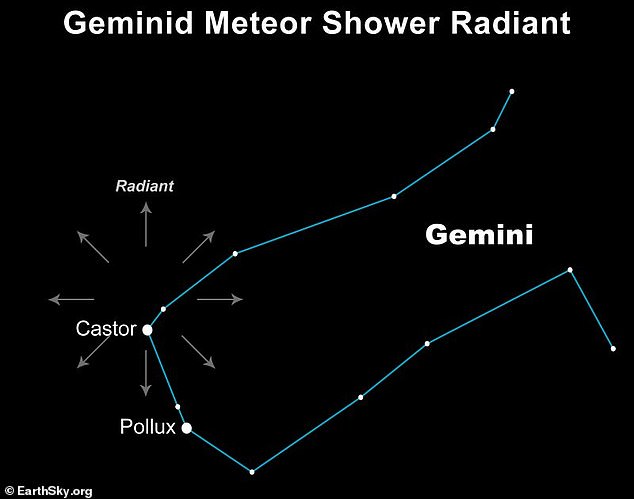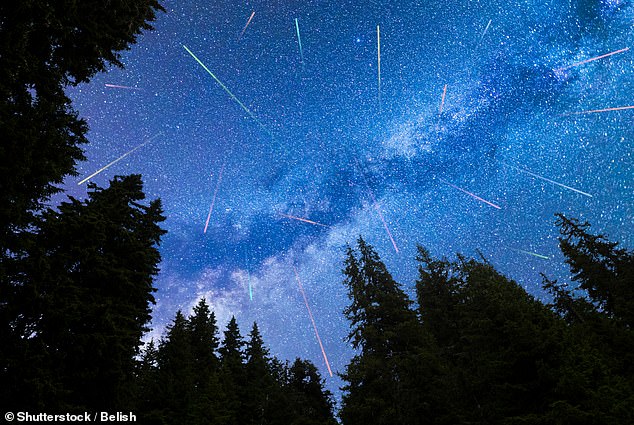Geminid Meteor Shower 2023 will light up skies this WEEK: How and when to see up to 150 multicoloured shooting stars every HOUR
- The “King of Meteor Showers” will reach its peak on the evening of December 14
- There can be up to 150 multi-colored meteors passing overhead every hour
If you're a fan of stargazing, be sure to mark Thursday in your calendar.
The Geminid meteor shower will peak that evening, and you don't want to miss it.
Also known as the “King of Meteor Showers,” Gemini can always be counted on to put on a spectacular show.
While the shower will be active from December 4 to 20, it will reach its peak on December 14 to 15 when there will be up to 150 meteors soaring overhead every hour.
Here's everything you need to know about the Geminids, including how and when you can see them from your hometown.
If you're a fan of stargazing, be sure to put Thursday on your calendar. The Geminid meteor shower will peak that evening, and you don't want to miss it

Geminis appear to radiate from the bright star Castor in the constellation Gemini, but it's actually best not to look directly at this area of the night sky as this may limit the number you see.
Meteorites are produced when pieces of comet and asteroid debris enter our planet's atmosphere.
The debris travels at incredible speeds of up to 43 miles per second (70 kilometers per second), and evaporates when it hits our atmosphere, causing streaks of light to appear in the night sky.
The Geminids come from pieces of an asteroid known as 3200 Phaethon.
The Royal Greenwich Museums explained: “Unlike comets, asteroids do not develop tails when approaching the Sun, and their composition is different.”
“However, scientists are still debating whether Phaethon is an asteroid or not – even though it is built like one, it does not move like one.”
“Its orbit is very elliptical, like a comet, which is why some scientists are discussing whether Phaethon could be an entirely new class of celestial body: a rocky comet.”

While shooting stars are primarily white, eagle-eyed viewers may also spot yellow, green, red, or blue meteors
Meteors are very bright and unusual because they are multi-colored.
While shooting stars are primarily white, eagle-eyed viewers may also notice yellow, green, red or blue meteors.
Royal Museums Greenwich said: “These colors are partly caused by the presence of traces of minerals such as sodium and calcium, the same effect that is used to make fireworks coloured.”
At its peak, at 19:27 GMT on Thursday, the shower could produce more than 150 meteors every hour.
While factors such as light pollution can affect your viewing, Royal Museums Greenwich claims we can expect “perfect conditions” for this year's show.
He explained, “In 2023, the maximum will occur on December 14 when the moon will be below the horizon all night, which means stargazers will benefit from ideal viewing conditions.”
Geminis appear to radiate from the bright star Castor in the constellation Gemini, but it's actually best not to look directly at this area of the night sky as this may limit the number you see.
Instead, head to an area with little light pollution, and try to look only to the side at a dark area of the sky.
Spotting them is a waiting game, so be sure to bring a comfortable chair and layers you can wrap them in.
Fortunately, Gemini can be seen with the naked eye, so there is no need to do without binoculars or a telescope.
(Tags for translation) Daily Mail
